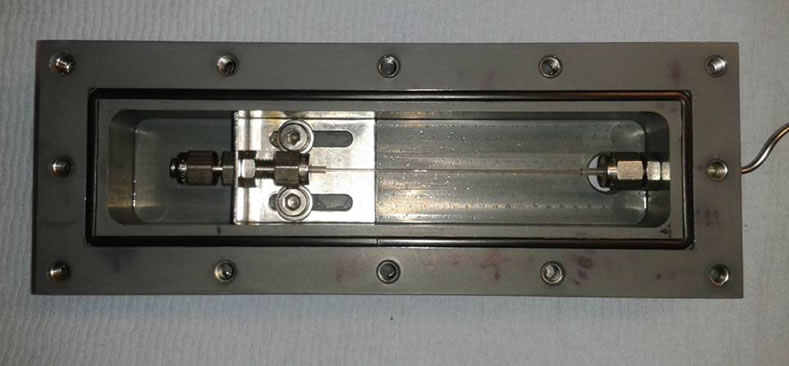Shelf-sea gross and net production estimates from triple oxygen isotopes and oxygen-argon ratios in relation to phytoplankton physiology
This studentship project will estimate biological net (N) and gross (G) production from in-situ measurements of oxygen-argon ratios (O2/Ar) and triple oxygen isotope ratios (17sup>O/16O, 18O/16O) combined with estimates of air-sea O2 exchange using wind-speed based parameterisations and remote sensing. The triple oxygen isotope-based gross production estimates, G(17O), will be compared to G estimated from fast repetition rate fluorescence (FRRF) using state-of-the art protocols, G(FRRF). This will provide productivity estimates at unprecedented high temporal and spatial resolution (of the order of minutes and 100s of metres) and bridge the gap between traditional bottle-based incubation techniques to measure productivity and satellite-based productivity algorithms. Estimates of N based on O2/Ar ratios, N(O2/Ar), give direct and independent biogeochemical constraints for the biological component of the shelf-sea carbon pump, which can only be derived indirectly from carbon species.
-

- Membrane inlet used for oxygen-to-argon ratio measurements in seawater. Under operating conditions, this box is closed with a lid and water is pumped past the membrane tubing that can be seen in the middle of the box. The stainless steel tubing on the right of the box leads to a quadrupole mass spectrometer.
The project will make direct contributions to two of the four key research questions of the Shelf Sea Biogeochemistry research programme, namely 'What are the current annual exchanges of carbon between UK/European shelf seas, the atmosphere, and the open ocean?' and 'What are the physical and biogeochemical controls on shelf primary production from the local to the shelf sea scale?' It also addresses one of the potential studentships suggested by the SSB consortium.
Net production estimates based on underway measurements of O2/Ar ratios and gross production based on 17O/16O and 18O/16O ratios of dissolved O2 have emerged as alternative biogeochemical approaches to traditional bottle incubations using O2 or isotopic tracers. These methods provide rates at high spatial resolution, are less laborious and the derived rates are free from errors caused by increased cell mortality or exclusion of grazers due to enclosure of the sample. The main uncertainty of the resulting data is due to the direct dependence of the rates on the air-sea gas exchange coefficient. We account for this by using a range of parameterisations, using the same approach as used to calculate the CO2 fluxes by the Work Package 1 consortium. However, the combination of O2/Ar and oxygen isotope technique actually also provides direct estimates of the export efficiency (f ratio) of the biological community, without recourse to gas exchange parameterisations and their inherent uncertainty.
We will combine these biogeochemical measurements with optical measurements to yield gross production and CO2 uptake rates. Previous G(FRRF) and G(17O) comparisons have shown poor agreement, so we would like to explore whether these discrepancies can be reduced by using recent advances in protocols for the interpretation of FRRF data.
In addition to providing a platform for this student project, CANDYFLOSS will provide parameters that will help to quantify and understand the variations in N and G, e.g. physical transport rates including vertical diffusion, photosynthetically active radiation (PAR), nutrient concentrations, phytoplankton community composition, grazing pressure, etc. Information on the community composition will help to improve gross production estimates if the isotopic composition of the photosynthetic end-embers proves to be species-dependent as recently suggested.
Objectives
- Infer spatial variations of net (N) and gross (G) O2 production rates from O2/Ar and triple oxygen isotopes in the Celtic Sea during spring and autumn.
- Derive 24 h-in situ production rates from diurnal changes at process stations.
- Calculate seasonally integrated production estimates from cruise-to-cruise changes.
- Compare G(17O) with FRRF-based physiological turnover and CO2 fixation rates.
- Use statistical tools to relate N and G to production estimates based on 15N- and 14C-uptake, respiration rates, light availability, nutrient supply, community structure and other UK SSB consortium data products.
